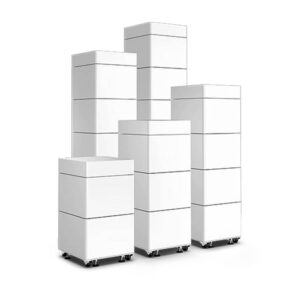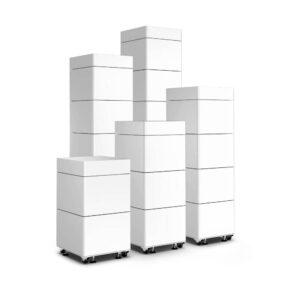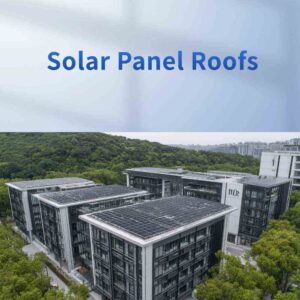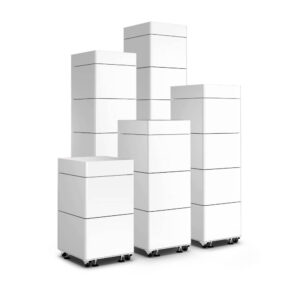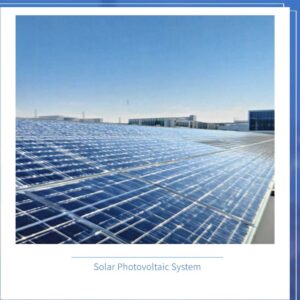Are you wondering if a photovoltaic window covering is the right move for your home? You get some great perks like lower energy bills, heat reduction, and a modern look. Many people love the glare control and UV protection, too. Take a look at the biggest pros and cons:
| Perks You’ll Notice | Things to Keep in Mind |
|---|---|
| Energy savings | Less privacy at night |
| UV and glare protection | Higher up-front cost |
| Sleek, modern style | Cleaning takes effort |
| Daytime privacy with views outside |
Think about what matters most to you. Do you value energy savings or need more nighttime privacy?
Основные выводы
- Photovoltaic window coverings help you save money on energy. They turn sunlight into electricity. This makes them a good choice for saving energy.
- These coverings block UV rays and glare. They help keep your furniture and floors from fading. They also make your home more comfortable.
- There are some downsides to think about. You may have less privacy at night. The cost to buy them is higher at first. You might need to plan more before buying.
- Think about your lifestyle and how your home is set up. Homes with lots of sunny windows get the most benefits. These coverings are great if you care about the environment.
- Before you choose, ask yourself some important questions. Think about how much light you want. Think about your budget and how much privacy you need. This helps you pick what is best for your home.
Quick Pros and Cons
Main Benefits
You might wonder what makes a photovoltaic window covering stand out. Here are the main perks you’ll notice right away:
- Lower Energy Bills: You can save money because these coverings help turn sunlight into electricity. Your home uses less power from the grid.
- UV and Glare Protection: You get less harsh sunlight inside. Your furniture and floors stay safe from fading, and your eyes feel more comfortable.
- Modern Style: These coverings look sleek. They add a fresh, updated touch to your windows.
- Daytime Privacy: You can see outside, but people can’t easily see in during the day. You keep your view without giving up privacy.
- Eco-Friendly Choice: You help the planet by using clean energy. Your home’s carbon footprint shrinks.
Tip: If you love natural light but want to cut down on heat and glare, these coverings might be a smart pick.
Key Drawbacks
Of course, every good thing comes with a few downsides. Here’s what you should keep in mind before you buy:
- Less Privacy at Night: When it gets dark outside and your lights are on, people can see in. You might need extra curtains for nighttime.
- No Blackout Option: If you want total darkness, these coverings won’t deliver. Light still gets through.
- Higher Upfront Cost: You pay more at first. The savings come later, so you need to plan for the investment.
- Cleaning Takes Effort: Dust and smudges show up. You’ll need to clean them more often than regular blinds.
- Durability in Wind: Strong winds can damage some types. If you live in a windy area, check the product details.
- Potential Fading: Over time, sunlight can fade the material. You may notice changes in color or texture.
Note: Think about your privacy needs and budget before you decide. Not every home is a perfect fit for a photovoltaic window covering.
How They Work
Technology Basics
You might wonder how a window covering can actually make electricity. It sounds high-tech, but the idea is pretty simple. Photovoltaic window coverings use special cells called photovoltaic (PV) cells. These cells sit inside the window covering. When sunlight hits them, they start working. The PV cells grab the sun’s energy and turn it into electricity you can use in your home.
What makes these coverings unique is that the PV cells are transparent or semitransparent. That means you still get natural light in your room. You don’t have to give up your view or sit in the dark. The cells let visible light pass through, but they also soak up some of the sun’s energy. This energy then becomes power for your lights, gadgets, or even your air conditioner.
Imagine your window shades quietly making electricity every sunny day. You don’t have to do anything extra. The technology works in the background, helping you save energy without changing your daily routine.
Types Available
You have a few choices when it comes to photovoltaic window coverings. One popular type is фотоэлектрическое стекло. This glass has solar cells built right into it. You can use it for windows, skylights, or even the outside walls of your home. The glass lets in daylight, so your rooms stay bright, but it also makes electricity at the same time.
Another option is solar shades. These look like regular window shades, but they have PV cells woven into the fabric. You pull them down like any other shade, and they start working as soon as the sun hits them.
Some homes use these coverings just for windows. Others use them for bigger areas, like glass doors or sunrooms. You can pick the style that fits your space and your needs. With so many options, it’s easy to find something that works for your home and helps you go green.
Photovoltaic Window Covering Benefits
Energy Efficiency
Do you want to use less energy at home? Photovoltaic window coverings can help you do that. These coverings change sunlight into electricity. Your home needs less power from the grid. You may see your energy bills go down. This is true if you have lots of windows.
- Homes with many windows can lower energy use by up to 40%. This happens when they use photovoltaic window coverings.
- You save the most in rooms with lots of sun.
- You help the earth by using clean energy, not fossil fuels.
Tip: If you want to save money and help the planet, this is a good choice.
UV Protection
Sunlight can hurt your furniture and floors. It can also damage your favorite art. You may not notice it right away. Over time, UV rays cause fading and wear. Photovoltaic window coverings block most of these rays. Your home stays fresh and bright.
Here’s how they compare to regular window coverings:
| Window Treatment Type | UV Ray Protection | Extra Benefits |
|---|---|---|
| Photovoltaic Window Coverings | Up to 99% | Stops fading of furniture and artwork |
| Traditional Window Treatments | Basic light control | Not much UV protection |
You can relax knowing your things are safe from sun damage. Your room also feels cooler and more comfy.
Modern Look
You want your home to look new and stylish. Photovoltaic window coverings fit with modern design. They look sleek and simple. You can pick styles like solar shades or special glass. Choose what matches your taste.
Here’s a quick look at how these coverings compare to other choices:
| Window Treatment Type | Плюсы | Cons |
|---|---|---|
| Solar Shades | – Blocks UV rays. – Cuts heat. – Keeps your view. – Looks modern. – Good for natural light. | – Costs more. – No blackout. – Needs special cleaning. – Not great for privacy at night. |
| Plantation Shutters | – Looks fancy. – Strong. – Good light control. – Great privacy. – Extra insulation. | – Expensive. – Bulky for small windows. – Not flexible. – Needs dusting. – Needs pro to install. |
| Top-Down/Bottom-Up Shades | – Flexible. – Good privacy. – Easy light control. – Simple look. – Saves energy. | – N/A |
You get a window covering that looks cool and works well.
Outward Views
You like natural light and want to see outside. Photovoltaic window coverings let you do both. You can look out during the day. You don’t feel closed in. People can’t see in, so you have privacy. You still enjoy the outdoors.
- You can watch the sunrise or sunset from your living room.
- Your rooms stay bright and open, not dark.
- You see the view and keep comfort and style.
Note: If you want to keep your view and protect your home, this is a great choice.
Photovoltaic Window Covering Drawbacks
Limited Privacy at Night
You get privacy during the day with solar shades. You can see outside, but people cannot see in. At night, things change. When you turn on your lights, people outside can see right into your home. This can feel uncomfortable if you live on a busy street or have neighbors close by. You do not have many options to fix this problem. You might need to add curtains or blinds for extra privacy after dark.
Note: If privacy at night matters to you, think about using another window covering along with your photovoltaic window covering.
No Blackout Option
Do you love sleeping in total darkness? Photovoltaic window coverings do not block all light. Some sunlight always gets through. You cannot make your room pitch black with these shades. This can be a problem if you work night shifts or need a dark space for watching movies. You may need blackout curtains for those times.
Первоначальная стоимость
You pay more at first for a photovoltaic window covering. The price depends on the type and quality you choose. Here is a quick look at what you might spend for each window:
| Type of Solar Screen | Cost Range per Window |
|---|---|
| Budget-Friendly Options | $50 to $150 |
| Mid-Range Solar Screens | $150 to $300 |
| High-End Solar Screens | $300 to $600 or more |
You save money over time with lower energy bills, but you need to plan for the higher starting cost. If you have many windows, the total price can add up fast.
Durability in Wind
Strong winds can damage some types of photovoltaic window coverings. If you live in a place with lots of storms or gusts, you need to check the product details. High-quality window films usually last 10 to 20 years under normal weather. Residential films tend to last longer than commercial ones because they get less sun and less wear. If your home faces harsh weather, you may need to replace your coverings sooner.
Tip: Ask about wind ratings before you buy. This helps you pick a covering that fits your local weather.
Potential Fading
Sunlight can fade your window coverings over time. This is more likely if you live in a high-altitude area where the sun is stronger. UV rays can change the color and texture of your shades. Your furniture and artwork can also fade faster. Using UV-blocking window film helps protect your home, but fading is still a risk with long-term sun exposure.
- Photovoltaic window coverings are vulnerable to fading from UV rays.
- High-altitude homes face more fading problems.
- UV-blocking films help, but do not stop all fading.
Note: If you want your shades to look new for years, check for extra UV protection when you shop.
Who Should Consider Them
Best Fit Homes
You might wonder if your home is a good match for a photovoltaic window covering. Homes with lots of windows facing the sun get the most benefit. If you live in a place with long sunny days, you can make the most of solar energy. Modern houses with large glass areas or open floor plans work well. If you want a sleek look and care about energy savings, these coverings fit your style. Older homes can use them too, but you may need to check if your windows can handle the extra weight or wiring.
Tip: If your windows get direct sunlight for several hours each day, you’re in a great spot to see real savings.
Lifestyle Factors
Your daily habits play a big role in how much you’ll enjoy these window coverings. Here are some lifestyle factors that make them a practical choice:
- You want lower utility bills and a more comfortable home.
- You prefer less need for heating and cooling systems.
- You like automated features that adjust to the weather, keeping your home cozy all year.
- You care about eco-friendly living and want to use solar energy.
- You want to reduce your reliance on traditional energy sources.
- You hope to save energy in heating, cooling, and lighting.
- You want technology that fits into your routine without extra effort.
If you value sustainability and smart home upgrades, you’ll find these coverings fit your lifestyle.
Budget Considerations
Thinking about your budget? You need to look at both installation and upkeep. The cost depends on the size of your system and how many windows you cover. Here’s a quick breakdown of typical annual costs:
| System Size | Annual Maintenance Cost | Cleaning Cost | Inspection Cost |
|---|---|---|---|
| 3kW | Under $200 | $90-$150 | $100-$200 |
| 6kW | $300-$500 | $150-$250 | $150-$300 |
| 10kW+ | Exceeds $500 | $250-$400 | $200-$300 |
You pay more upfront, but you save money over time with lower energy bills. If you plan to stay in your home for years, the investment can pay off. Make sure you budget for regular cleaning and inspections to keep your system working well.
Note: If you want to balance style, savings, and sustainability, a photovoltaic window covering could be the right choice for you.
Making Your Decision
Key Questions
You have a lot to think about before you pick photovoltaic window coverings. Start by asking yourself a few simple questions:
- Do you get plenty of sunlight through your windows each day?
- Is saving money on energy bills important to you?
- Do you want to lower your carbon footprint and help the planet?
- How much privacy do you need at night?
- Can you handle a higher upfront cost for long-term savings?
- Are you okay with regular cleaning and some maintenance?
- Do you want to keep your outward views and let in natural light?
If you answered “yes” to most of these, you might love the benefits of photovoltaic window coverings. If you said “no” to a few, you may want to look at other options.
Tip: Write down your answers. This helps you see what matters most for your home and lifestyle.
Alternatives
Not sure if photovoltaic window coverings are the best fit? You have other choices that can boost energy efficiency and privacy. Many homeowners pick traditional window treatments that work well and look great. Here’s a quick look at some popular options:
| Window Treatment Type | Key Features |
|---|---|
| Cellular Shades | Top choice for insulation. They keep rooms warmer in winter and cooler in summer. |
| Roller and Solar Shades | Cut down on heat and glare. They give your windows a clean, modern look. |
| Roman Shades | Offer good insulation with a soft, stylish feel. |
| Side Panels and Drapery | Block light gaps and add extra insulation. |
| Shutters | Give natural insulation. You can adjust them for comfort in any season. |
You can mix and match these treatments to fit your needs. For example, pair cellular shades with drapes for extra warmth and privacy. Shutters work well if you want a classic look and strong insulation.
Note: Every home is different. Try out samples or talk to a window expert before you decide. Your perfect window covering is out there!
Choosing a photovoltaic window covering can help you save on energy bills, enjoy modern style, and boost comfort at home. You get better light control and UV protection, but you need to weigh privacy and cost. Experts say these coverings work best if you want smart home upgrades and care about sustainability. Think about your light needs, window size, and budget. For the best results, talk with a solar professional who can guide you based on your home.
ЧАСТО ЗАДАВАЕМЫЕ ВОПРОСЫ
Can you install photovoltaic window coverings on any window?
You can put them on most windows. Large, sunny windows work best. Some old or oddly shaped windows may not fit. Always check with a professional before you buy.
How much electricity can you expect to generate?
Most homes see small savings. You might power a few lights or charge your phone. The amount depends on your window size, sun exposure, and the type of covering you pick.
Tip: South-facing windows usually make the most energy!
Do photovoltaic window coverings need a lot of maintenance?
You only need to clean them with a soft cloth and mild soap. Check for dust or smudges every few weeks. Schedule a yearly inspection to keep everything working well.
Will these coverings work during cloudy days?
Yes, they still work, but you get less energy. On cloudy days, the coverings make less electricity. You will still get some benefits like UV protection and glare control.
Can you combine photovoltaic window coverings with other window treatments?
Yes! You can use curtains or drapes at night for more privacy. Many people layer them for style and extra comfort.
Note: Mixing treatments gives you the best of both worlds—energy savings and privacy.

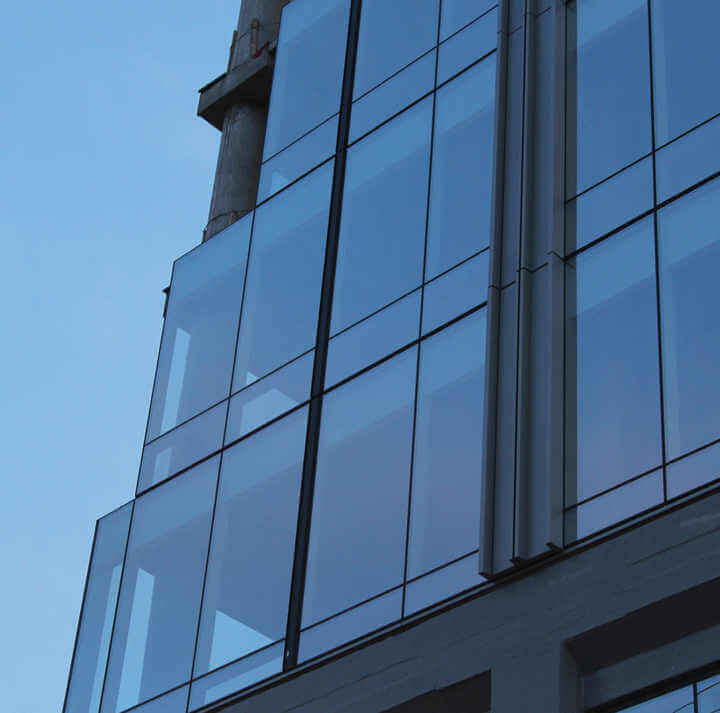
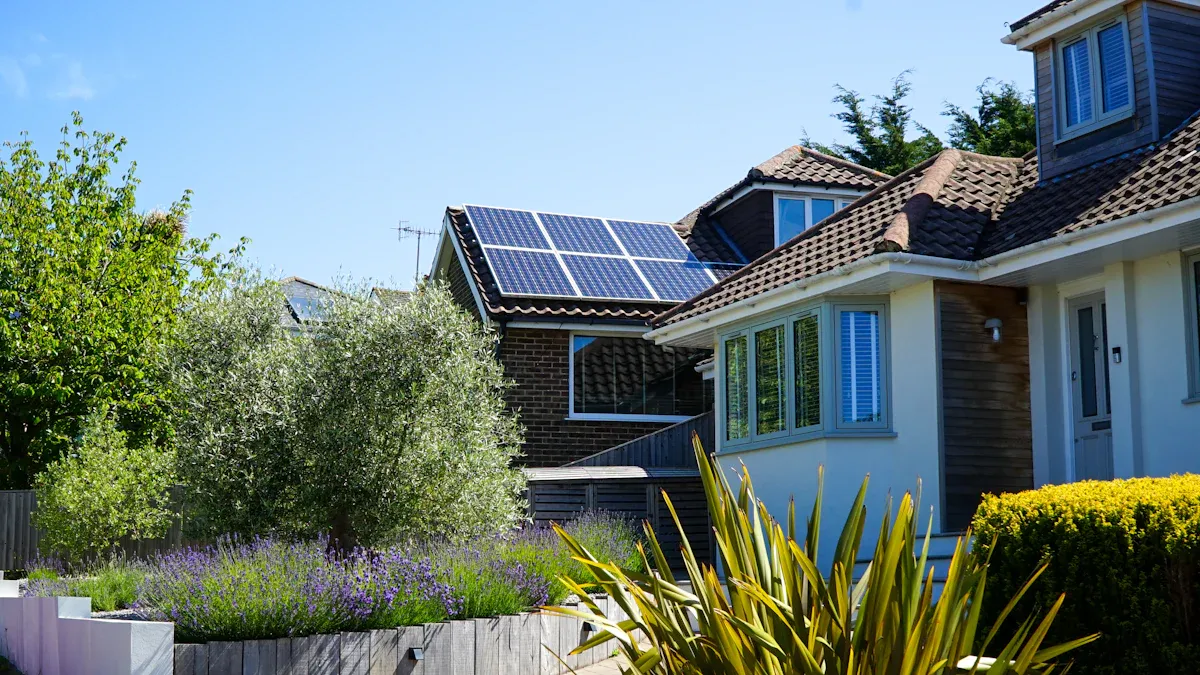
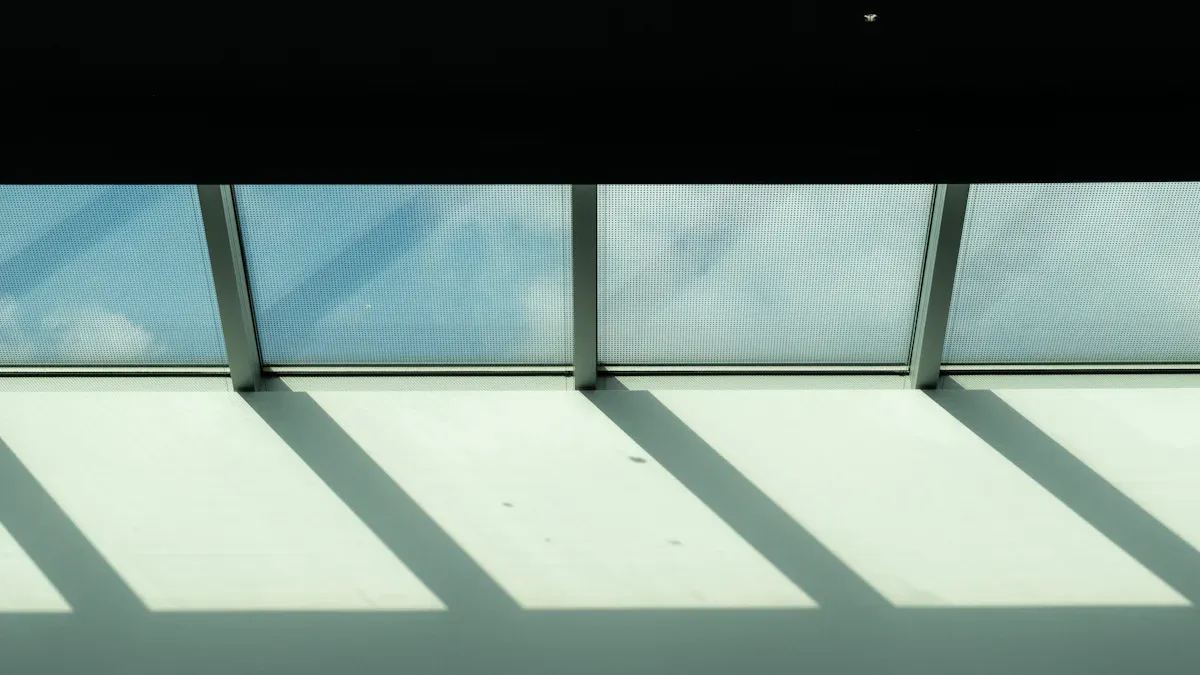
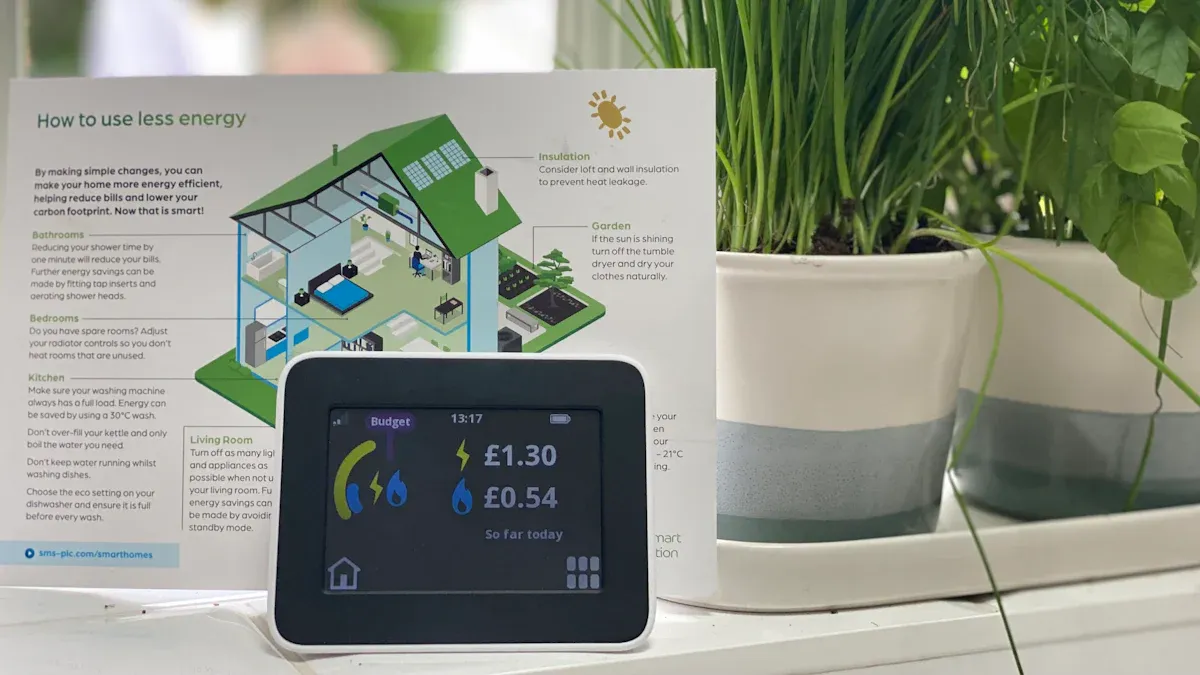



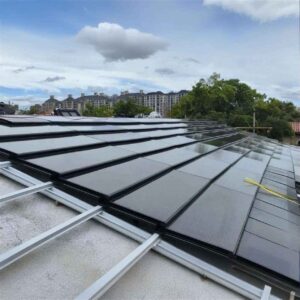
-300x300.jpg)
-300x300.jpg)
